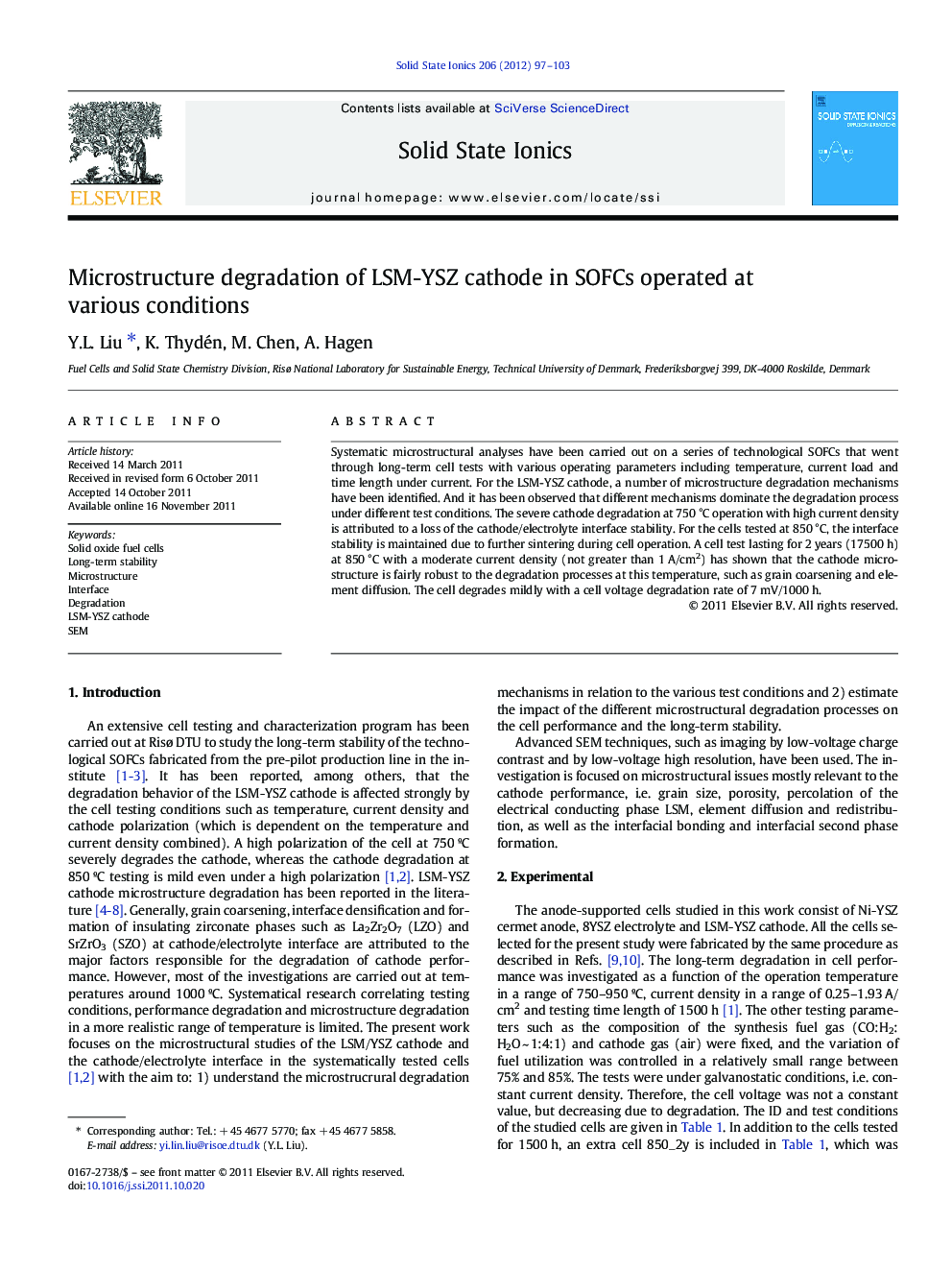| Article ID | Journal | Published Year | Pages | File Type |
|---|---|---|---|---|
| 1294627 | Solid State Ionics | 2012 | 7 Pages |
Systematic microstructural analyses have been carried out on a series of technological SOFCs that went through long-term cell tests with various operating parameters including temperature, current load and time length under current. For the LSM-YSZ cathode, a number of microstructure degradation mechanisms have been identified. And it has been observed that different mechanisms dominate the degradation process under different test conditions. The severe cathode degradation at 750 °C operation with high current density is attributed to a loss of the cathode/electrolyte interface stability. For the cells tested at 850 °C, the interface stability is maintained due to further sintering during cell operation. A cell test lasting for 2 years (17500 h) at 850 °C with a moderate current density (not greater than 1 A/cm2) has shown that the cathode microstructure is fairly robust to the degradation processes at this temperature, such as grain coarsening and element diffusion. The cell degrades mildly with a cell voltage degradation rate of 7 mV/1000 h.
► Long-term microstructure degradation of LSM-YSZ cathode has been studied on a series technological SOFCs. ► Different microstructural mechanisms dominate the degradation processes under different operating temperatures. ► The major difference in the microstructural degradation for operation at lower (750 °C) and higher (850 °C) temperatures is the stability of the cathode/electrolyte interface. ► 750 °C operation destabilizes the interface chemically and mechanically results in a high degradation rate of the cathode performance.
